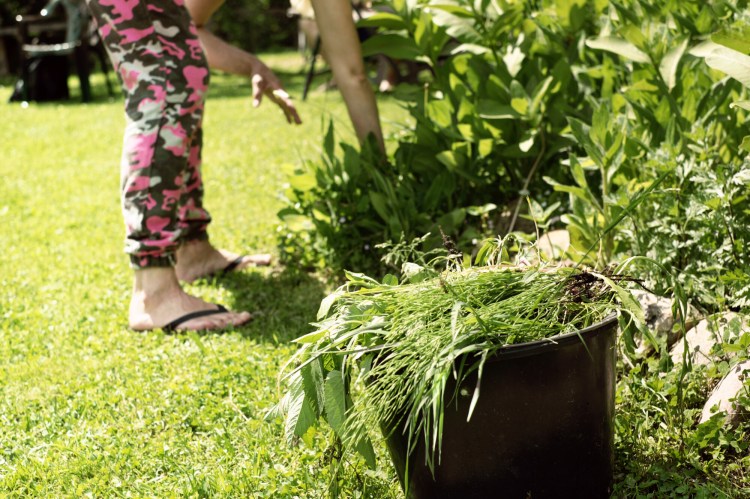Yes, it’s November, but it would be wise to give your gardens – both the vegetable plot and the flower beds – one more weeding before the ground freezes.
More and more gardeners leave their perennial plants standing over the winter, both to feed the birds and to allow for self-seeding. But these may mask the undesirable plants, which also have seeds that have dropped and sprouted or will sprout. Those are the seedlings you should dig out now.
We do a partial fall cleanup of our flower beds. We cut back the plants whose leaves have flopped to the ground, like hostas and daylilies. We leave alone plants that stand tall, like echinaceas and rudbeckia (commonly known as black-eyed Susan). The standing plants not only drop their seeds, they also stick up above the snow, providing winter interest in the garden.
While we are trimming back the flopped plants, we also carefully pull the undesirable seedlings, roots and all, and remove their seeds. They’re easier to deal with in the fall when they have just seeded, and it saves time in the spring, which is usually the busiest time of the growing season.
Many of the plants we pull appear on the state’s invasive-species list. I have been amazed this year how much oriental bittersweet has shown up in our garden. The seedlings’ leaves are bright yellow in fall, which makes them easy to spot, and the bright orange roots – once you you’ve pulled out the plant – confirm your identification.
I’ve also found burning bush, honeysuckle and Japanese barberry seedlings, although I don’t know of any of those shrubs that still grow near our property. Birds can carry the seeds a long way. And I’ve been finding quite a bit of thistle this year, as well as purslane, bindweed, vetch, creeping Charlie, plantain, some clovers and chickweed.
With the fall rains we have been having – a blessing after the drought earlier in the summer – the roots have been easy to remove, often without even requiring a garden trowel. But you will definitely need one for dock and dandelion, whose roots go deep into the soil.
You might as well accept that you are never going to be able to eliminate certain weeds.
Among the worst is goutweed, also called bishop’s weed, Nurseries used to sell the plant (botanical name: Aegopodium podagrariaas) as a reliable groundcover, and it worked – so well that it covered a lot more ground than the people who planted it wanted. It’s now on the state’s do-not-sell list. It thrives in many types of soil and light conditions, and it spreads – far and wide – through underground rhizomes. The only non-chemical way to get rid of it is to smother it with heavy material such as carpeting, a process that takes at least two years. You can at least slow the spread of bishop’s weed by digging out the roots with a shovel.
Dandelions also will never go away. Bees love them, which makes sense because both honeybees and dandelions originally came from Europe.
My wife, Nancy, asked me to include horsetail, or equisetum, in this list. It is impossible to get rid of, but it is native, and it dates back 350 million years or more. Though I kind of like it, I do pull it out whenever I find it in a garden. I know it will come back, and that’s OK with me. Jewelweed is also tough to eliminate, because its seeds are prolific, but at least it is easy to pull.
Black swallowwort is yet another plant that seems impossible to remove without chemicals. Keep pulling. And if you find dock on your property, keep cutting it back. You should be able to starve it to death in three to four years. Don’t use your mower to cut it down unless you vigorously clean the blade and under-carriage afterwards. Dock can grow from small pieces of the original plant.
You can take a break when the ground freezes and, I hope, we get some snow.
Tom Atwell is a freelance writer gardening in Cape Elizabeth. He can be contacted at: tomatwell@me.com.
Send questions/comments to the editors.



Success. Please wait for the page to reload. If the page does not reload within 5 seconds, please refresh the page.
Enter your email and password to access comments.
Hi, to comment on stories you must . This profile is in addition to your subscription and website login.
Already have a commenting profile? .
Invalid username/password.
Please check your email to confirm and complete your registration.
Only subscribers are eligible to post comments. Please subscribe or login first for digital access. Here’s why.
Use the form below to reset your password. When you've submitted your account email, we will send an email with a reset code.